Road trip | Puerto Vara, Lago Llanquihue | Chile
Puerto Varas and Lago Llanquihue: Road Trip Guide
Text | Anninka Kraus
Photography | Tobias Kraus

Chile Los Lagos
Puerto Varas is located on the banks of Lake Llanquihue in southern Chile’s Lake District, 22km from Puerto Montt. Circuiting the lake in anti-clockwise direction, you’ll visit Petrohué, the Saltos del Petrohué, Mirador del Bosque, Puerto Octay, and Frutillar.
The small town of Puerto Varas sits on the shores of Lago Llanquihue, the second largest lake in Chile, 20 kilometres north of Puerto Montt. Unfortunately, the city robbed itself of a lakeside promenade with a busy main road skirting the lakeshore, but the fabulous views across the lake to the snow-capped volcanic cones of Osorno and Calbuco explain its popularity with local and foreign tourists.
We spent half a day to explore the small place with its Traditional German-style architecture, then rented a car and circuited the lake, almost 200 kilometres and on dirt roads in parts. It’s a beautiful road trip through southern Chile’s Lake District that you can do in 1-2 days.
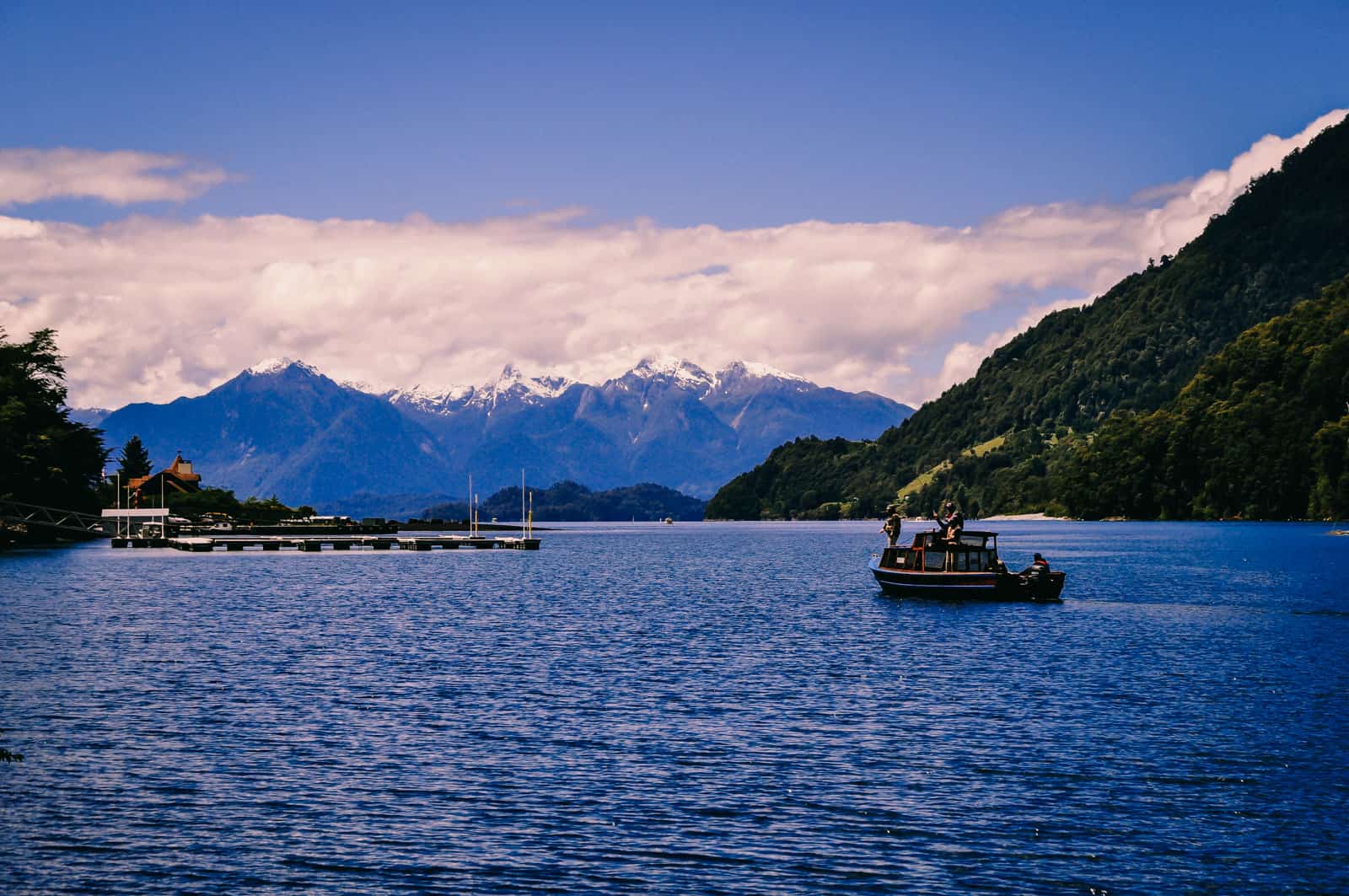






what to expect.
Explore Puerto Varas on the shores of Lago Llanquihue and soak up the fabulous views across the lake to the snow-capped volcanic cones of Osorno and Calbuco
Eat delicious Kuchen alemán, fantastic German-style cake that you’ll find in every cafe
Embark on a Road Trip around Lago Llanquihue and visit Petrohué, the Saltos del Petrohué, Mirador del Bosque, Puerto Octay, and Frutillar
Become immersed in meadowy countryside graced with old wooden farmsteads and flanked by blossoming yellow gorse
Recommended time in Puerto Varas | 2-3 hours
Puerto Varas
The German influence in the whole of Puerto Varas was unmistakable: almost every restaurant and café advertised Kuchen alemán (German cake), a „Deutschen Verein“ (German association) feigned a sense of home with Hax’n and Sauerbraten, and at the time of our visit half the country was attending Oktoberfest taking place in town, in Lederhosen.
This attachment of emigrants to their German roots is quite amusing, take Swakopmund in Namibia or Hahnsdorf in Australia for example, and, I assume, common to emigrants of all nations who seek security and comfort in familiar customs, traditions, and food (strangely enough the one thing my whole family missed most in New Zealand were German bratwurst and bread rolls; family and friends too, of course).
In Puerto Varas however, this attachment to Germany had a slightly negative connotation. It’s a well-known fact that many Nazis absconded to South America on escape routes, fittingly called ratlines, and indulged in their twisted ideology for yet some time. When Walther Rauff, an SS commander in Nazi Germany and one of the most wanted Nazi fugitives, died in Chile in 1984 some misguided bastards in fact still remembered the Hitler salute and chanted „Sieg Heil“.
These thoughts crossed our mind yet have nothing to do with bratwurst heritage in Puerto Varas (Rauff was manager for a king crab cannery not German style butchery) or marching bands and lederhosen that, though a dreadful sight, aren’t dangerous as such.
Our accommodation, a guesthouse run by a dourly German lady was unbearably and hilariously old-fashioned German – some Weimar ornamental plates hanging on the wall were as old as a plush couch and uncomfortably sagging beds. I assumed she had not been back to Germany since her emigration to realise that almost all German living rooms nowadays emulate one of five photos in the IKEA catalogue.
road trip details.
Start/End: Puerto Varas
Directions: follow Route 255 from Puerto Varas to Ensenda, take Route U-99-V north towards Puerto Octay, follow U-55-V southwest to Frutillar (or V-155 if you want to drive right along the lakeshore), and return to Puerto Varas on Route 5.
Distance: 220km
Time: 1-2 days (driving time approx. 4 hours)
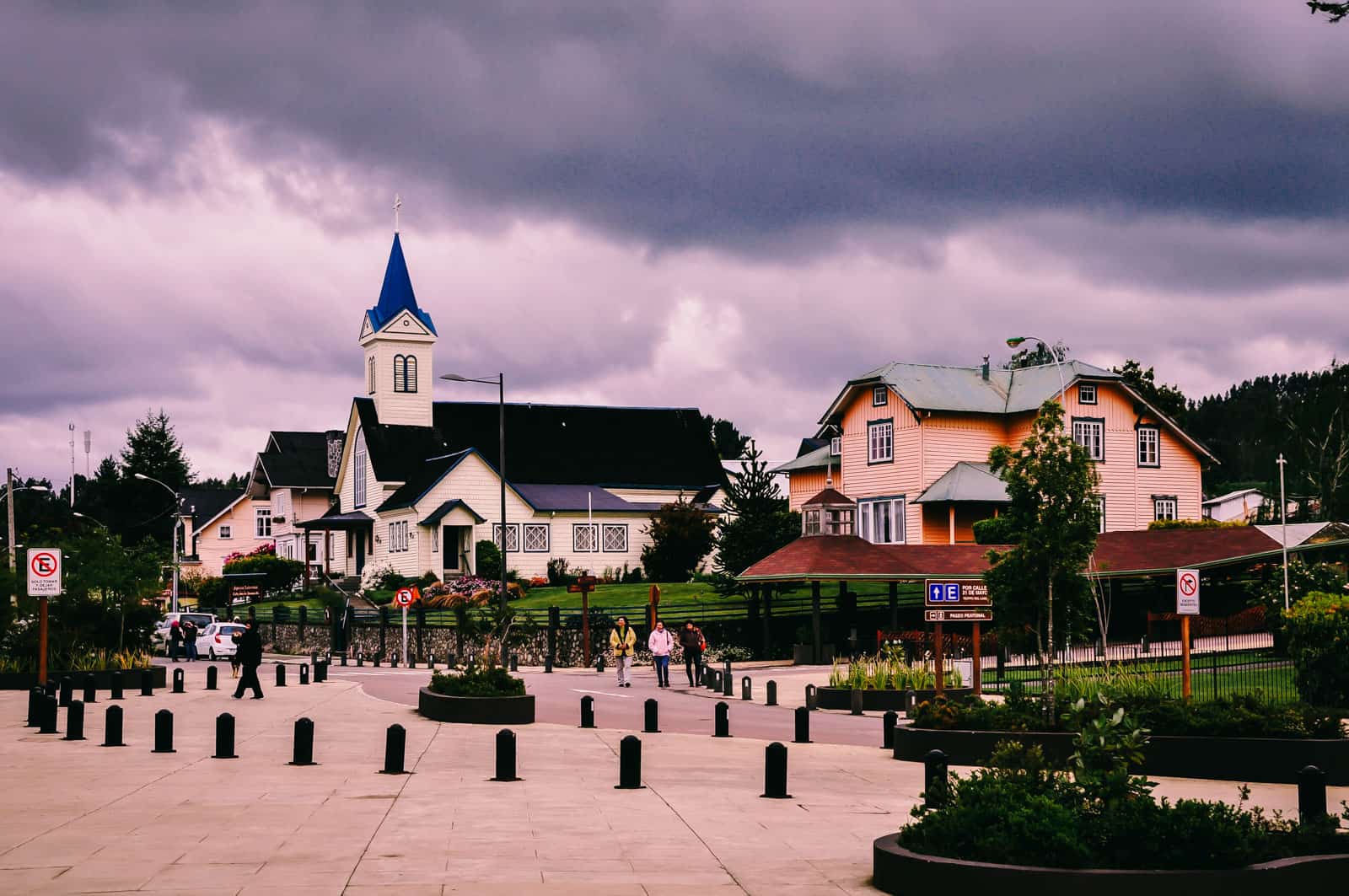






Puerto Varas road trip map
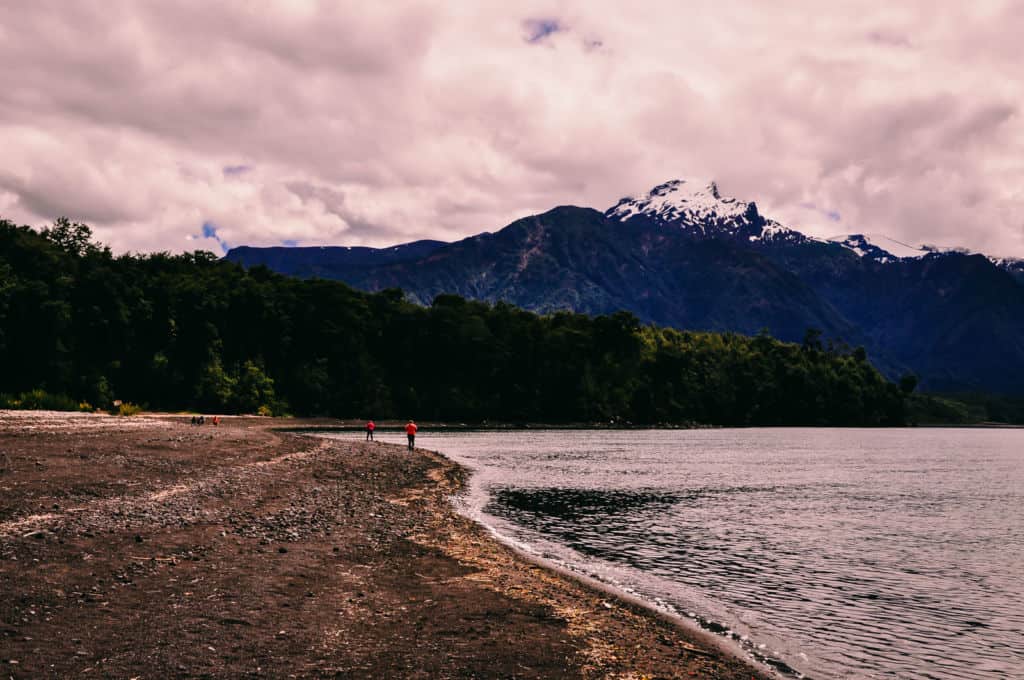
Travel time Puerto Varas - Petrohué: 50 min | Recommended time in Petrohué: 1 hour
Petrohué
Travelling anti-clockwise to our first stop, Petrohué, a miniscule spot at the end of a cul-de-sac road on the shore of emerald green Lagos Todos los Santos inside Vincente Pérez Rosales National Park towered over by the Osorno volcano.
Its location is beautiful and secluded, a lodge and CONAF campsite at either end of a pebble beach winding along the shore, and little else to distract from the scenery.
Travel time Petrohué - Saltos del Petrohué: 5 min | Recommended time at Saltos del Petrohué: 1hour
Saltos del Petrohué
Driving back, we stopped at the Saltos del Petrohué, a cascading waterfall roaring through chutes in a narrow volcanic rock canyon in the Petrohué River filled with frothing spray and engulfing us in mist.
Back on route U-99-V winding along the eastern shore of Lago Llanquihue we, shortly after, turned into a smaller road, U-925, towards the lakeshore and became immersed in meadowy countryside graced with old wooden farmsteads flanked by blossoming gorse in midst of flocks of sheep and their young grazing on glossy carpets of buttercups.
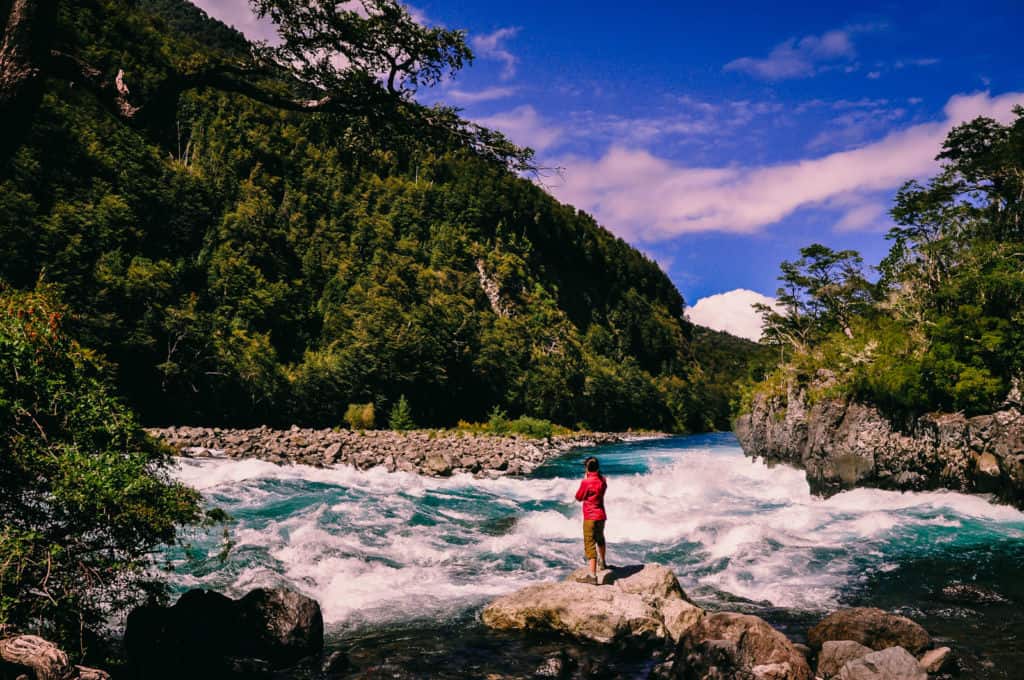
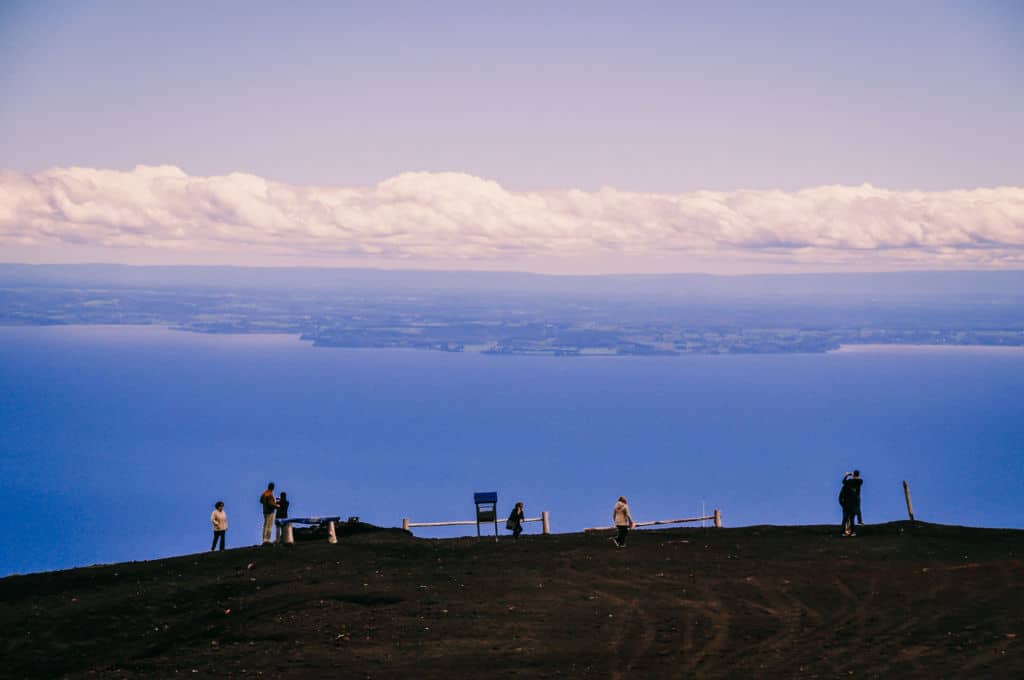
Travel time Saltos del Petrohué - Mirador del Bosque: 30 min | Recommended time at Mirador del Bosque: 30 min
Mirador del Bosque
Mirador del Bosque is a spectacular lookout on the way to the Osorno volcano skicenter with fantastic views of the lake.
I was glad to be wearing a windbreaker though and you might want to take a sweater/windbreaker even in summer.
Travel time Mirador del Bosque - Puerto Octay: 1 hour | Recommended time in Puerto Octay: 1 hour
Puerto Octay
We stopped twice more, in Puerto Octay, located on the northern lakeshore more or less opposite of Puerto Varas, and Frutillar in the west.
Puero Octay, out-of-season, was a very sleepy little place once colonialised by Germans, which was visible in the German-style architecture dating back to the early twentieth century.
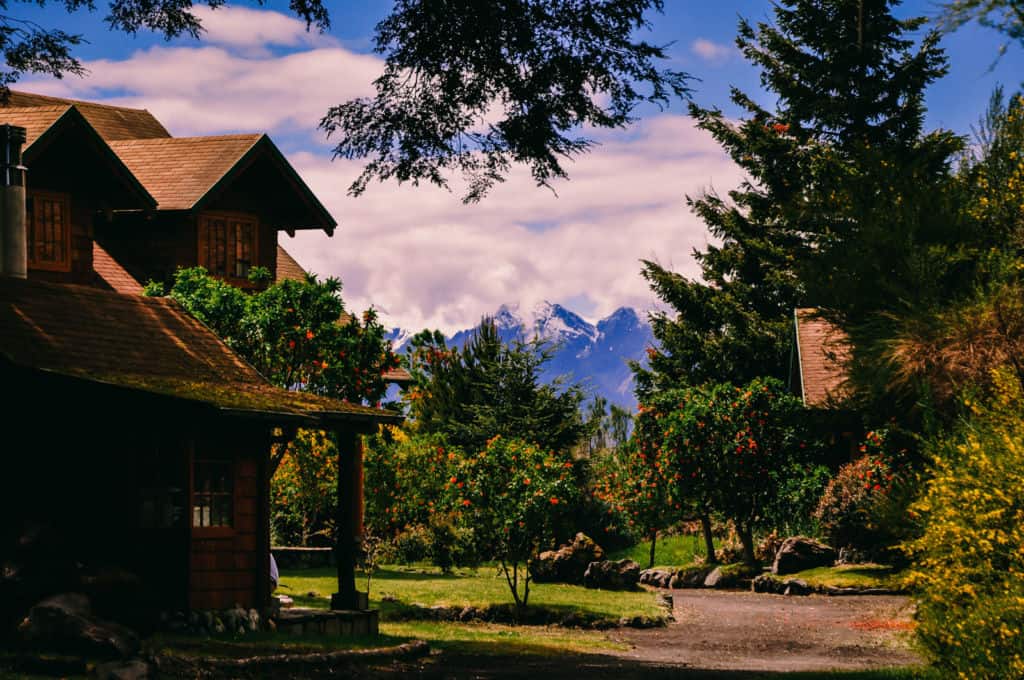
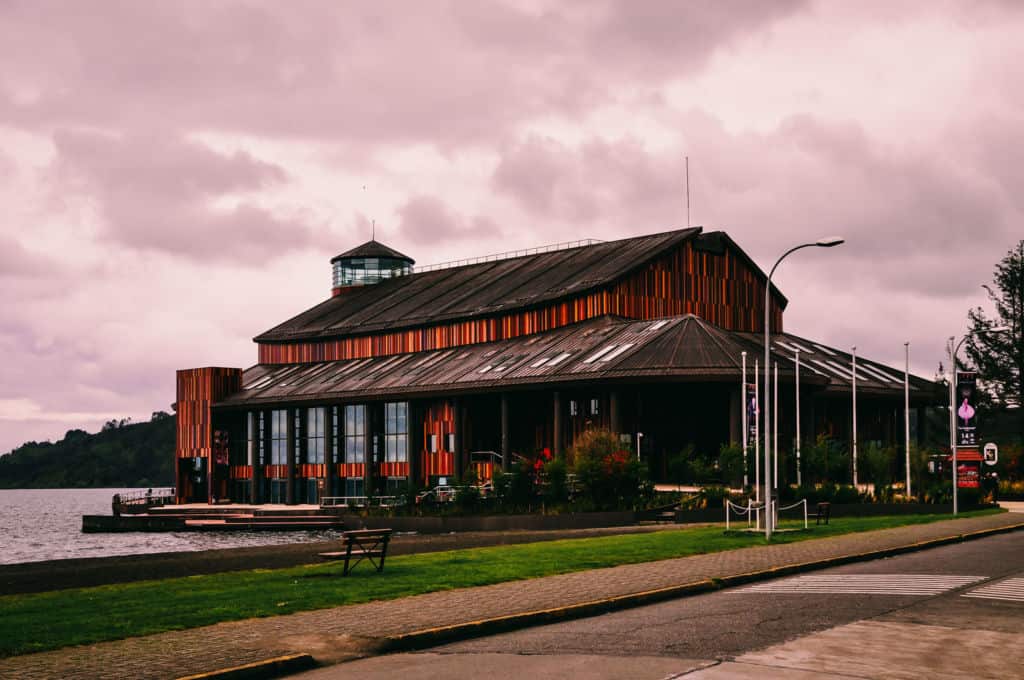
Travel time Puerto Octay - Frutillar: 20 min | Recommended time in Frutillar: 1 hour
Frutillar
Frutillar is somewhat bigger and walking alongside the promenade it was impossible to not gape at the imposing Teatro del Lago, a theatre and concert hall that cost US$44 million and took ten years to build.
The EU is well known to waste, lose, and misallocate moneys or fund seaports where not a single ship has landed or ever will, but why a place with 16.000 inhabitants needed a concert hall of such proportions, with a seating capacity for 1.200 people, was equally beyond my comprehension. At least it can boast the best acoustics of a hall of its kind in the whole of South America.
From Frutillar, it’s a 20-min drive back to Puerto Varas.